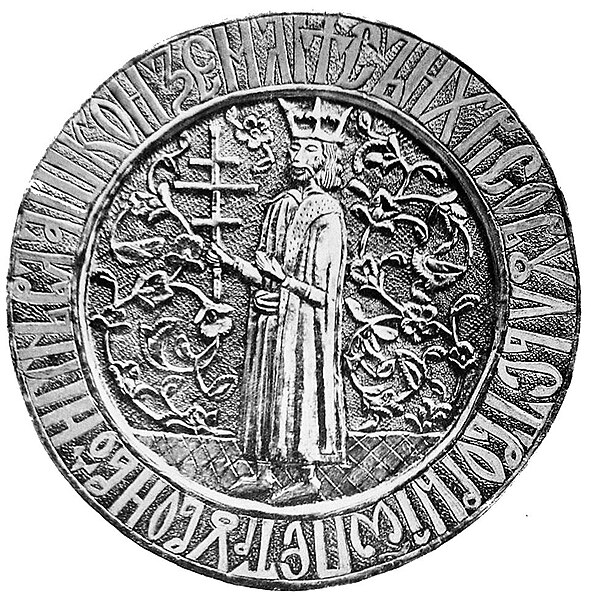Radu VII Paisie, officially Radul voievod(a) (Church Slavonic: Радул воєвода; Greek: Ῥαδουλ-Βοδα, romanized: Radul-Voda), also known as Radu vodă Măjescul, Radu vodă Călugărul, Petru I, and Petru de la Argeș (ca. 1500 – after 1545), was Prince of Wallachia almost continuously from June 1535 to February 1545. A man of uncertain origins, he depicted himself as an heir to the House of Basarab and the Drăculești: the son of Prince Radu the Great and half-brother of Vlad Vintilă and Radu of Afumați. The scholar Nicolaus Olahus partly supported this account and further claimed that Paisie was his own cousin. The descent is endorsed by some modern historians, whereas others suggest that Paisie was a regular member of the boyar class, or even a fishmonger. He is known to have been a monk of the Wallachian Orthodox Church before his coronation.
Radu Paisie as ktitor. David and Radoslav's fresco in the infirmary of Cozia Monastery
Mural of Ottoman Army soldiers, at Petru Rareș's Moldovița Monastery
Paisie in an 18th-century mural at his Gura (Valea) Monastery
Paisie's other seal, depicting him alone
Wallachia or Walachia is a historical and geographical region of modern-day Romania. It is situated north of the Lower Danube and south of the Southern Carpathians. Wallachia was traditionally divided into two sections, Muntenia and Oltenia. Dobruja could sometimes be considered a third section due to its proximity and brief rule over it. Wallachia as a whole is sometimes referred to as Muntenia through identification with the larger of the two traditional sections.
Wallachia in the late 18th century
The Battle of Posada in the Chronicon Pictum
Wallachia as pictured in the 1493 Nuremberg Chronicle
Chindia Tower in Târgoviște








